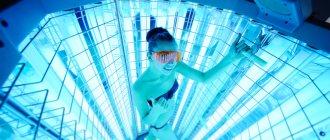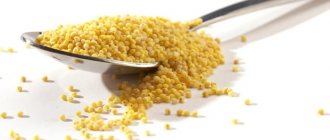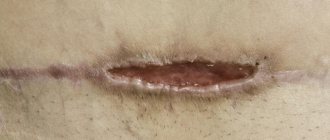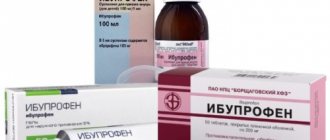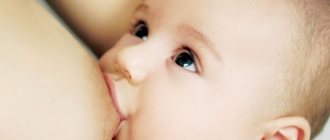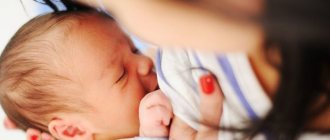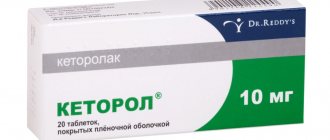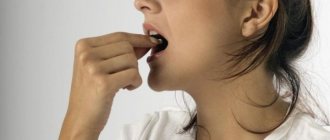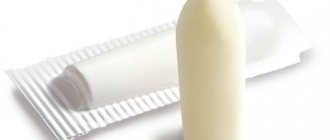No-shpa during breastfeeding - a drug to relieve spastic pain
No-spa is part of a group of medications that are intended to relieve spasms of the smooth muscles of internal organs. The drug was first synthesized in Hungary in the 60s of the last century. To date, the medicine has been registered in more than fifty countries around the world. No-shpa is annually included in the TOP 20 brands in terms of sales volume on the Russian market. The drug is on the list of vital and essential drugs, which is approved by the Government of the Russian Federation.
Thus, over a 40-year period, more than 37 clinical and pharmaco-epidemiological studies of No-Shpa were conducted in more than 12,111 patients. The high effectiveness and safety of the drug has been convincingly proven.
Yu. B. Belousov, M.V. Leonova
Methodical manual “Clinical pharmacology of No-shpa”
The drug No-shpa is indicated for use by nursing mothers in the complex treatment of the following diseases:
- diseases of the biliary tract: cholelithiasis, inflammation of the bile ducts, cholecystitis, papillitis;
- pathologies of the urinary system: kidney stones, stones in the ureter, cystitis, pyelitis;
- stomach and duodenal ulcers, gastritis;
- chronic inflammation of the small intestine;
- inflammatory processes in the mucous membrane of the colon;
- irritable bowel syndrome;
- headaches arising from compression of the vessels supplying the brain;
- lactostasis caused by spasms of the milk ducts;
- first stage mastitis.
The instructions for the drug No-shpa summarize that due to the lack of clinical studies, the medicine cannot be used during lactation. But the manufacturer reports that No-shpa can be taken with caution during pregnancy, since no negative reactions have been recorded in the fetus. Two authoritative reference books indicate the compatibility of the drug with breastfeeding:
- reference guide “Risk of using medications during pregnancy and lactation.” Authors: O.I. Karpov, A.A. Zaitsev;
- reference book by professor of pediatrics Thomas Hale “Medications and Mothers`Milk. Breastfeeding Pharmacology".
No-shpa: video
Is it possible to noshpu after childbirth - All about pregnancy
There is an almost unanimous opinion that medications should not be taken during breastfeeding. Not only experts, but also most mothers think so.
But this is all theory, but in practice? What if a situation suddenly happened that you couldn’t do without medication? Let's say my mother is in pain, and usually under such circumstances she would drink no-shpa. How to proceed? Is this drug suitable for a nursing mother? After all, noshpa is one of the very effective remedies for pain and spasms.
How will pills or injections affect the baby and breast milk? We will try to answer all these questions in this article.
No-shpa during breastfeeding. Is it possible to drink or endure pain?
Is it possible or not? To drink or not to drink? This is the question that occupies the minds of nursing mothers. And it concerns everything that gets inside the body. The contents of the first aid kit are no exception. What approved medications should be put in it as an important component - painkillers? Is noshpa included in this list?
Antispasmodics and analgesics
Pain is different, and you have probably encountered such a phenomenon that choosing some kind of painkiller became a waste of money and it was not possible to relieve an attack of pain with its help.
A drug such as No-shpa relieves spastic pain and belongs to the group of antispasmodics. In addition to antispasmodics, analgesics are widely used to relieve pain syndromes.
What is better for pain caused by spasms - antispasmodics or analgesics?
Spastic pain accompanies spasms of the smooth muscles of hollow internal organs (gastrointestinal tract, urinary and biliary systems), as well as spasm of cerebral vessels. It lasts from 20 minutes to 4 hours. Most often it is a consequence of premenstrual syndrome, chronic diseases of the gastrointestinal tract such as peptic ulcers, and dietary errors.
Such pain is dealt with by antispasmodics, which relax the muscles and relieve spasm and the pain caused by it. Antispasmodics are divided into two groups - neurotropic and myotropic. Neurotropic agents affect the nerve impulse transmission system, stimulating the tone or relaxation of the smooth muscles of internal organs.
Myotropic drugs directly affect the smooth muscle cells of internal organs, changing the biochemical processes occurring in them. This group also includes noshpa, often prescribed to relieve painful spasms and relax the muscles of the internal organs during pregnancy and breastfeeding.
There are also herbal antispasmodics - chamomile, tansy, mint, oregano, etc.
Analgesics eliminate any pain by blocking the pain center in the brain. If the pain is caused by a spasm, then their use is not justified. They do not eliminate the spasm, and the clinical manifestations of the inflammatory disease can be erased, which is already dangerous.
For example, if you have an attack of appendicitis, then taking an analgesic will relieve the pain. And you won’t guess that you have appendicitis.
And it’s good if the ambulance in this case really turns out to be an ambulance. In addition, a nursing mother can take a non-narcotic analgesic only once.
With long-term use, a toxic effect is observed on both the nursing mother and the infant.
Side effects of no-shpa
Any medicine has side effects. Noshpa is no exception. If a side effect occurs in a nursing mother, then with a high degree of probability it will also occur in the child.
Side effects include:
- decreased blood pressure;
- manifestations of an allergic nature;
- increased sweating;
- palpitations or tachycardia;
- dizziness and feeling hot.
An overdose can cause respiratory arrest and cardiac paralysis.
Noshpa and breastfeeding
Opening the instructions for the drug Noshpa, in the list of contraindications for use we see lactation, or breastfeeding.
This list automatically includes all drugs that have not been studied in this area.
That is, there is no reliable data obtained experimentally about the possible harm that a breastfeeding child can receive. Therefore, it is necessary to correlate the benefit brought to the nursing mother with the possible harm caused to the child.
On the other hand, studies conducted on pregnant animals did not reveal toxic or teratogenic effects on the fetus, and they gave birth to normal and healthy babies. This drug is not contraindicated in pregnant women.
From which we can indirectly conclude that No-shpa, when breastfeeding in volumes not exceeding those prescribed, is limited to those possible consequences that are described in the side effects of the drug and its harmfulness to mother and child is minimal.
The active component of noshpa, drotaverine, can penetrate hematological barriers, including the hemato-milk barrier between blood and breast milk. Its concentration peaks in the blood 45-60 minutes after application.
Therefore, it is logical to assume that it is advisable to drink noshpa before or immediately after feeding, and you should refrain from putting the baby to the breast for the next 2-3 hours, with a decrease in the concentration of drotaverine in the blood plasma.
Today, a large number of painkillers can be purchased without a prescription. Uncontrolled use of them does not solve the problem caused by pain. And during breastfeeding it can become dangerous for the baby.
After all, pain is a signal that indicates trouble in the body.
Therefore, such drugs should be considered as an adjuvant that relieves the symptoms of the underlying disease, and first of all it is necessary to eliminate the cause.
Source: https://momchild.ru/mozhno-li-noshpu-posle-rodov.html
Composition of the drug, therapeutic effect
The active ingredient of No-shpa is drotaverine. It acts directly on smooth muscle cells, influencing internal biochemical processes. Unlike drugs that relieve discomfort by reducing the sensitivity of pain receptors, drotaverine eliminates the cause of discomfort - muscle spasm, the causes of which are quite varied. For a nursing mother, they are divided into natural, which depend on recovery processes after childbirth, and pathological, arising from acute and chronic diseases. Spastic pain can manifest itself in various forms: burning, twisting, colic. Painful attacks can last from one hour to several days. The mother's condition can vary from some discomfort to unbearable pain.
No-shpa tablets relieve spasms of the digestive tract
In addition to reducing smooth muscle tone, taking No-shpa dilates blood vessels. There is no negative effect on the autonomic nervous system. Despite the antispasmodic activity of drotaverine, the use of No-shpa does not provoke serious adverse reactions from the cardiovascular system.
Tablets and injection solution for various pains
No-spa is available in two forms: tablets (40 mg), ampoules with solution for intramuscular and intravenous injections. For intravenous administration, you need to dilute the medicine with saline. The effect of the drug in both forms is the same. The only difference is the speed of achieving the maximum effect, the percentage of absorption of the active substance, and the degree of local focus. Also, No-spa in the form of a solution does not irritate the gastric mucosa.

Injectable solution acts faster than tablets
The injections work approximately twice as fast. The effect of the tablets is distributed throughout the body, while the solution affects a specific painful area. In addition, the tablets may cause some stomach and intestinal disorders. The advantage of this form of release is a more convenient method of use and the absence of pain, lumps, or bumps at the injection sites. The tablets are also used in complex therapy for diseases of the gastrointestinal tract.
GW compatibility
The instructions for use of the drug indicate that it cannot be used during breastfeeding. In fact, manufacturers do not have the necessary clinical data to prove otherwise. You cannot conduct a study during lactation to study the effect of a drug on a baby without knowing how it will turn out for the child. It is precisely because of the possible negative effects of the drug and harm to the baby’s body that manufacturers decline responsibility.
Since the data on the compatibility of no-shpa during hepatitis B has some uncertainty, doctors recommend taking the drug only when urgently needed on a one-time basis.
During the entire period of use of No-shpa by mothers during lactation, not a single case of a negative effect of the drug on the child was recorded. But nevertheless, if you are forced to take the drug for long courses, you should stop breastfeeding for a while. This will protect the child from possible consequences.
It is important to know that most of the drug enters the blood and then into breast milk. The highest concentration is achieved an hour after taking the drug. Only after 72 hours no-spa is eliminated from the body through the kidneys and gastrointestinal tract.
Efficacy, contraindications
No-shpa is several times more powerful than its predecessor, Papaverine. After taking one tablet, the analgesic effect begins within ten minutes. The maximum effect occurs after forty minutes. After administration of the solution, the effect of the drug begins within three to four minutes. According to clinical studies, adverse reactions may occur in one to two percent of people. Statistics say that discomfort did not decrease at all in about 17%. Long courses of treatment with No-shpa three times a day, 80 mg for several weeks, led to a significant reduction in spastic pain in 80% of patients. No-spa is often used in combination with Paracetamol, Ibuprofen, Diclofenac.
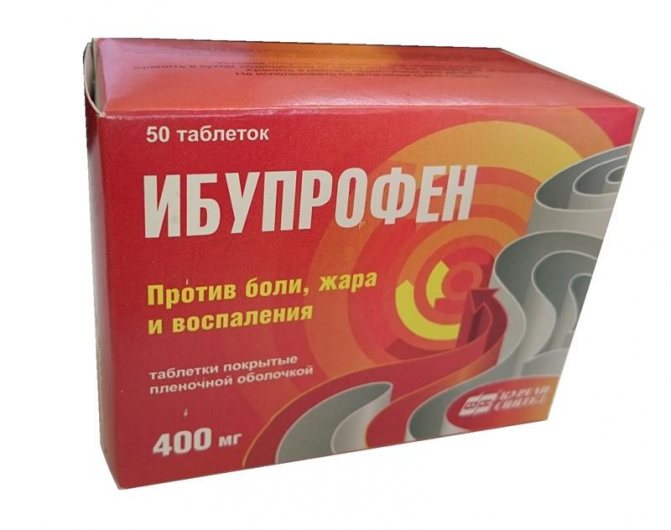
No-Spa in combination with Ibuprofen enhances its analgesic effect
Despite the relative safety of the drug, it should not be used in the following cases:
- severe forms of renal and liver failure;
- severe heart failure;
- intolerance to the components of the drug;
- arterial hypotension (with caution).
Taking No-shpa may be accompanied by the following side effects:
- headaches, dizziness, sleep disturbances;
- decreased blood pressure, increased heart rate;
- digestive disorders;
- skin allergic reactions.
Instructions for use
One tablet contains 40 mg of medication. When breastfeeding, the dose, frequency and duration of taking No-shpa must be agreed with your doctor. In general, tablets are taken two to three times a day, 1–2 pieces each. The maximum daily dose should not be more than 240 mg. When administering the solution, the daily dose can range from 40 to 240 mg, depending on the intensity of the pain. The course of therapy should not exceed one or two days. If the positive effect is not felt, then you need to consult a doctor. If longer treatment is prescribed, breastfeeding must be interrupted.

Breastfeeding must be interrupted if long-term use of No-Shpa is necessary.
To avoid irritation of the gastric mucosa, tablets should be taken after meals. But if it is necessary to relieve acute spastic pain, the medicine can be used at any time.
Drotaverine passes into breast milk in small quantities. To reduce the effect of the substance on the child’s body, it is recommended to take the drug immediately after feeding the baby. The half-life of drotaverine is about eight hours. It is important to constantly monitor the child’s reaction. If allergic reactions occur in the form of a rash, stomach cramps, pain, you should stop taking the medicine and see a doctor immediately.
Reviews
Girls, I wanted to write everything here, but somehow I forget. The surgeon’s advice for lactostasis helped me VERY much. He advised drinking noshpa 20–30 minutes before feeding/pumping. And the gynecologist also told me to make compresses with magnesium, which also helped well (pour the ampoule into 100 ml of warm boiled water, moisten the gauze and apply it to the chest, when it dries, repeat). Also, sprigs of aloe (only their juice is very bitter, you need to wash your breasts well afterwards), cabbage leaves were smeared with honey or levomekol and applied.
Nats
https://detki-33.ru/forum/9–145–70885–16–1284921473
How is this known? I did a search and found posts from breastfeeding consultants that said that you can take no-shpu. I got tired of suffering and took a pill. I breastfed 4.5 hours after that.
MAMAKATYA
https://forum.littleone.ru/showpost.php?p=91843001&postcount=6
Natasha, noshpa helps me in any condition (pregnant, breastfeeding, normal) - it relieves spasms. But normally I still take Tempalgin. They say that citramon is natural, but to me it’s like grain to an elephant...
Visagiste
https://www.sv-mama.ru/forum/read.php?id_theme=3494&p=&hl=140123#highlight
Indications for use
If we talk about antispasmodics and painkillers, then no-spa is the safest remedy that helps a nursing mother get rid of pain and spasms. But you should always remember that any medication used during lactation and pregnancy should be discussed with your doctor.
Doctors recommend taking no-shpu once for such conditions as:
- headache,
- pain during menstruation,
- high blood pressure.
A single use of the drug in this case does not require discontinuation of breastfeeding. It is enough to take the tablet after feeding the baby. But there are cases when long-term treatment with daily intake of no-shpa is required. Such situations will be described below.
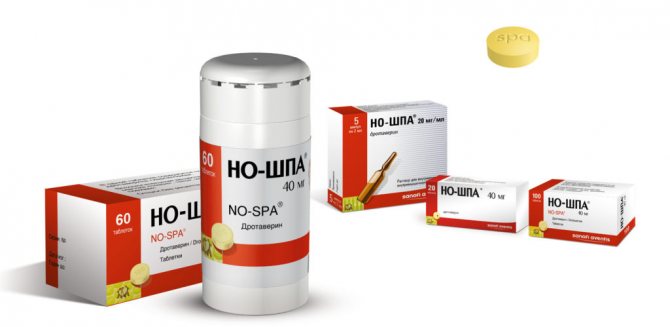
Analogues of No-shpa, comparative characteristics
There are many drugs based on drotaverine (direct analogues) on the medical market:
- Drotaverine. Produced at more than ten Russian factories. Price - from 13 rubles for 20 tablets;
- Drotaverin-Teva (Israel). From 70 rubles for 20 tablets;
- Spasmonet (Russia, Slovenia). From 60 rubles for 20 tablets;
- Ple-Spa, Spakovin, Spazoverin (India).
According to the instructions, they are all almost identical in their properties. When choosing a medicine, in order to avoid counterfeits and low-quality drugs, you need to give preference to a well-established manufacturer. Hungarian has been producing medicine under the brand name “No-shpa” for more than fifty years.
Antispasmodics approved for breastfeeding based on other active ingredients include Papaverine and Mebeverine. Their effectiveness is several times lower than that of No-shpa.
Table: antispasmodics that are compatible with breastfeeding
| No-shpa | Papaverine | Mebeverine | |
| Active substance | drotaverine | papaverine | mebeverine |
| Indications for use | Spasms with:
|
|
|
| Contraindications |
|
| individual intolerance |
| Side effects |
|
|
|
| price, rub. | from 230 for 100 tablets | from 12 for 10 tablets | from 550 for 30 capsules of 200 mg |
